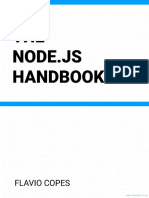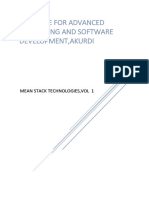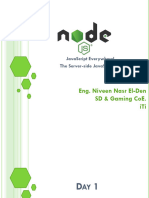0% found this document useful (0 votes)
20 views38 pagesLecture 9 Node Js
Node.js is a JavaScript runtime built on Chrome's V8 engine, designed for building fast and scalable network applications, particularly suited for data-intensive real-time applications. It features an event-driven, non-blocking I/O model and is used for developing back-end services or APIs. The document outlines its basic concepts, parts, features, environment setup, and appropriate use cases, emphasizing its popularity among developers due to its open-source nature and extensive library support.
Uploaded by
Ma RACopyright
© © All Rights Reserved
We take content rights seriously. If you suspect this is your content, claim it here.
Available Formats
Download as PDF, TXT or read online on Scribd
0% found this document useful (0 votes)
20 views38 pagesLecture 9 Node Js
Node.js is a JavaScript runtime built on Chrome's V8 engine, designed for building fast and scalable network applications, particularly suited for data-intensive real-time applications. It features an event-driven, non-blocking I/O model and is used for developing back-end services or APIs. The document outlines its basic concepts, parts, features, environment setup, and appropriate use cases, emphasizing its popularity among developers due to its open-source nature and extensive library support.
Uploaded by
Ma RACopyright
© © All Rights Reserved
We take content rights seriously. If you suspect this is your content, claim it here.
Available Formats
Download as PDF, TXT or read online on Scribd
/ 38

























































































